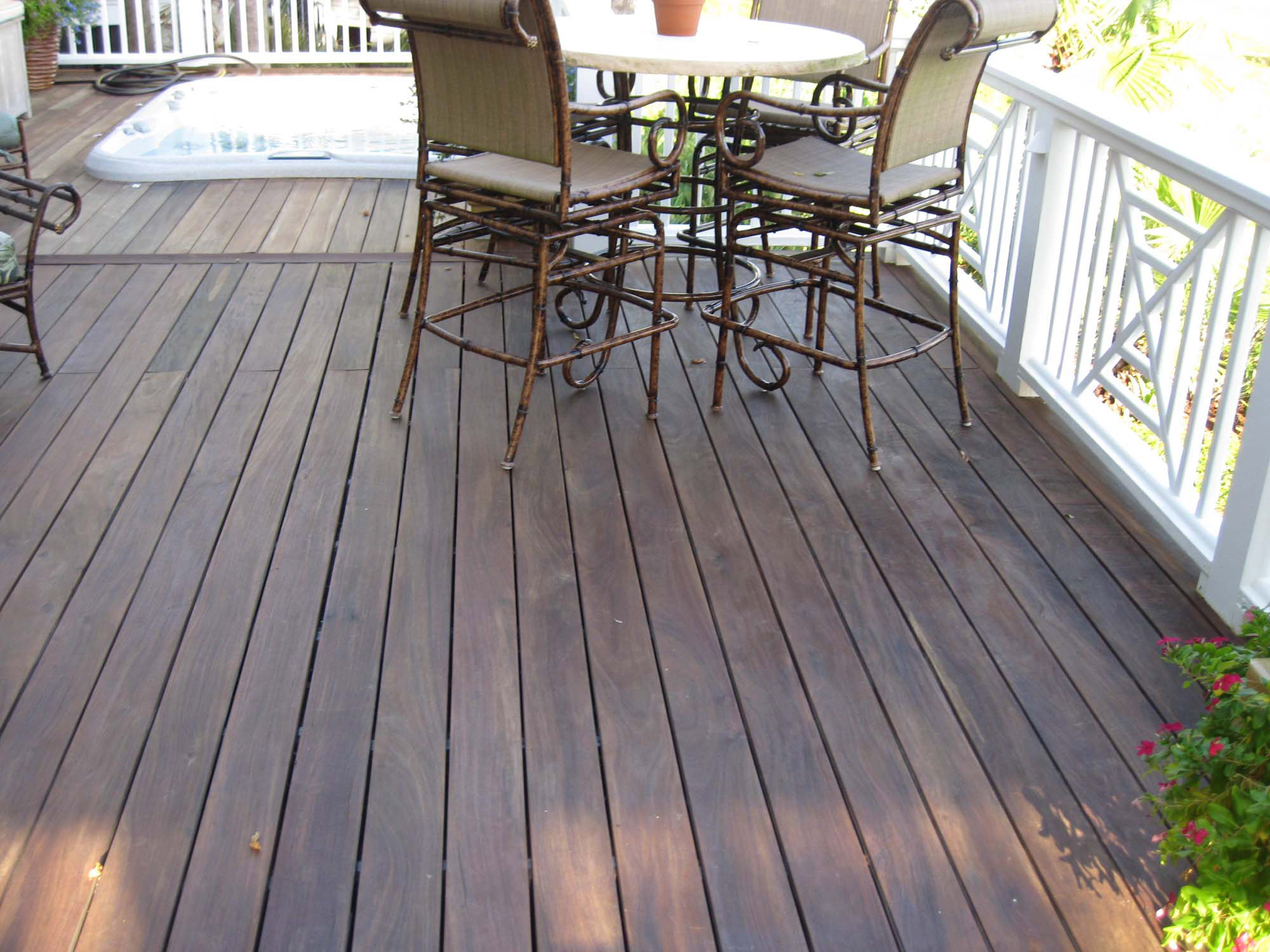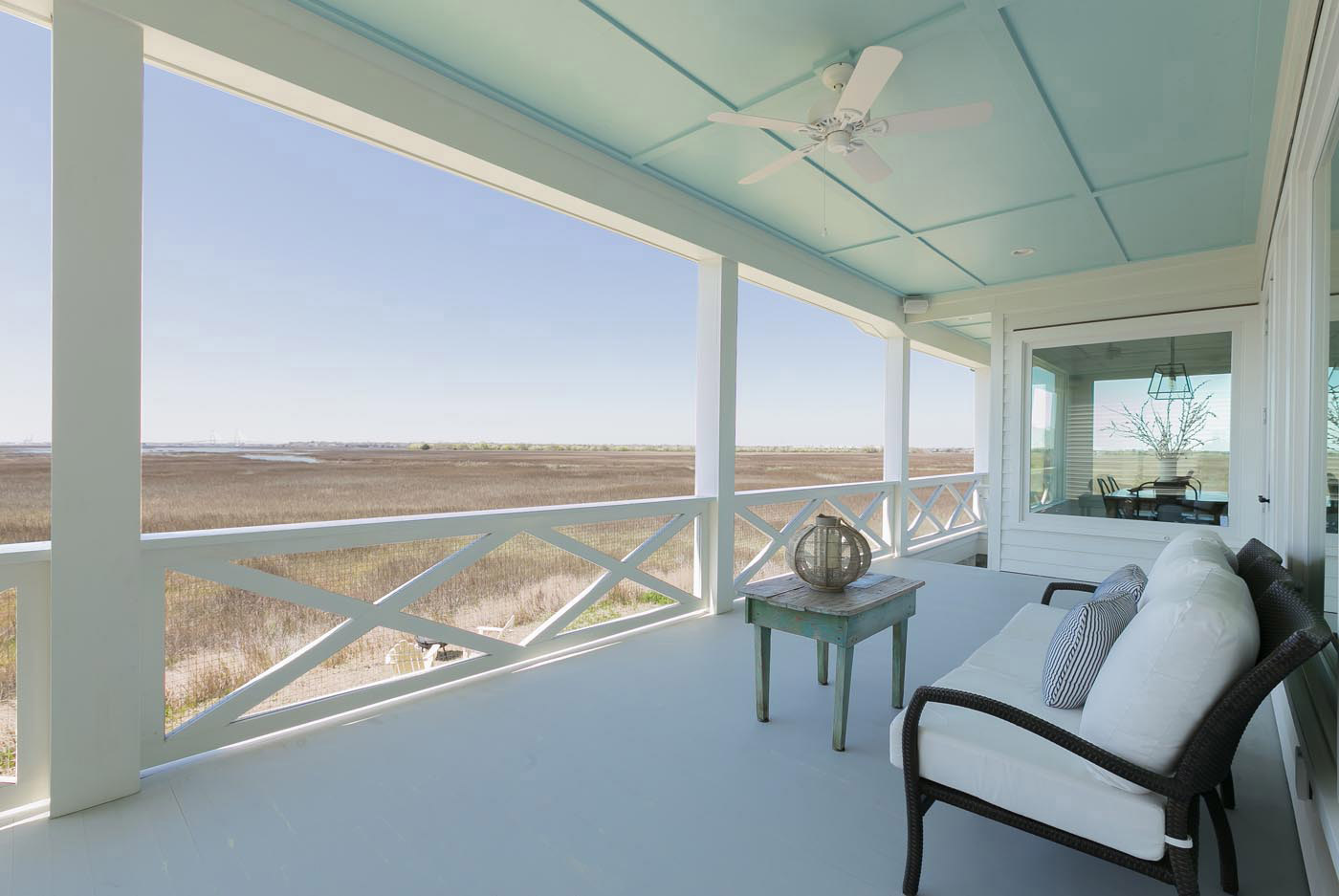Ipe vs Treated Decks
When looking to build your home, or even remodel, the quality of the materials used should always be your focus. How beautiful or unique the design is will mean little if the materials used to carry out that vision are subpar. This goes not only for your home itself, but also for your outside entertainment areas.
If you are considering building a deck, it is important to think about which material would be best for your needs and aesthetics. This is especially true when it comes to choosing between Ipe or pressure treated decks.
 This Ipe deck at a Sullivan's Island home represents one option when choosing Ipe vs treated decks.
This Ipe deck at a Sullivan's Island home represents one option when choosing Ipe vs treated decks.
Pressure Treated Decks
Pressure treatment is a harsh process that forces chemical preservatives into wood. The wood itself is most commonly southern yellow pine. This is considered a sustainable resource as it is grown close to home and the trees it is cut from are replanted, thus replenishing the resource. The pressure treating process, however, is not eco-friendly and certainly creates byproducts and waste that are not good for the environment.
How does it work? The wood is first placed inside a closed off cylinder. It is then vacuumed, and pressure is applied to force the chemical preservatives into the wood. These chemicals protect the decking from termites, a variety of other insects, and even fungal decay. Normally termites will bypass treated wood on a home to get to untreated wood.
Your deck is likely to become your entire family’s playground or a place where guests mingle for long, leisurely hours. There are a few health concerns regarding the chemicals used in pressure treatments since there is exposure for those who utilize this type of wood in a deck. For this reason, treated lumber is not permitting to be used on the inside of a home.
One thing to consider is that children often crawl along the deck, placing their hands and even their mouths on the treated wood. Pets will lie on the pressure treated wood for long hours in the sun. Even adult guests may frequently walk barefoot, risking exposure to the chemicals directly on their skin.
We recommend staining or sealing pressure treated lumber to help elongate the life of the product. If left untreated, you could expect a pressure treated deck to last 10 to 12 years in a saltwater, high moisture environment before you will have significant splintering. If sealed or stained, you can expect to get 15+ years of life from a treated deck.
Pressure treated lumber comes in a variety of sizes and can be bought in tongue-and-groove as well. Most classic Charleston porches are built from the 5/4” x 4” tongue-and-groove pressure treated pine deck boards which we always pre-prime on all sides and then normally paint a color.

The pre-priming of the wood on all sides is very important as, once installed, you cannot seal 100% of the surface area. Keeping the wood sealed will help elongate the life of your pressure treated deck by minimizing the moisture content fluctuations in the wood. Changing moisture content levels means moving wood which results in faster deterioration
Treated lumber as a general rule of thumb runs about a quarter of the cost of Ipe decking.
Ipe Decking
In contrast to pressure treated decks, Ipe decking is 100% free of harsh chemicals or wood preservatives. Beyond the obvious safety benefits of using a pure, exotic wood for your decking, there are also financial and practical gains as well.
Pressure treated decks, despite the use of preservatives, will often show a lot of wear and tear in just a few short years. While Ipe decking may experience a slight color change to a silvery gray shade – which many find appealing in its own right – pressure treated decking will undergo much more severe changes. The wood does not stand up nearly as well to the elements, and will develop brightly discolored patches, faded spots, and a worn, weary look overall. In fact, an Ipe deck used in a commercial setting over several years will oftentimes hold up better than a pressure treated deck in a private, residential environment.
Ipe is an exotic hardwood. It’s so hard in fact that it needs to be pre-drilled prior to installing your screws. If you try to screw directly into Ipe, you will see what we mean. There are a variety of ways to install Ipe or Treated decks using hidden fasteners which is standard practice on all Sea Island Builders projects. The same can be said about “picture” framing around an Ipe or Treated deck.
From a cost perspective, Ipe is 4x the investment of a treated pine deck on a square footage basis. Ipe comes milled in a variety of different product ranging from handrails with a water shedding edge, to 6” square edge deck boards, to multiple tongue-and-groove sizes.
One alternative to Ipe currently on the market is Garapa. Garapa is also an exotic hardwood. It’s slightly blonder in color, but exhibits all the strengths of Ipe when it comes to weathering. The price is nearly half that of Ipe. We will revisit the different types of exotic deck materials in another article as it would get too lengthy to mention all to options here.
For the wellness of your family, and for the extended beauty of your home and outdoor entertaining space, an Ipe deck is an excellent choice. The natural, exotic hardwood enhances your environment, and gives you a safe and healthy place to relax for years to come. If you are thinking about the pros and cons of using Ipe vs treated decks and the installation thereof, please do not hesitate to get in touch with us, as we’d be happy to share some of our experience with you.




